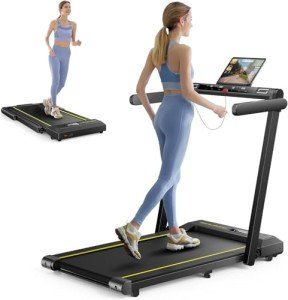9 Things Your Parents Taught You About Walking Pad Non Electric
Exploring the Benefits of Walking Pads: The Non-Electric Choice
In the age of modern physical fitness solutions, where innovation reigns supreme and sophistication is frequently associated with electrical makers, a new pattern is emerging in practical workout: the non-electric walking pad. These easy yet reliable pieces of devices are capturing the interest of physical fitness lovers and casual walkers alike.
In this extensive guide, we will explore what walking pads are, their benefits, comparisons with conventional treadmills, and provide answers to often asked questions.
What is a Walking Pad?
A walking pad is a compact workout platform developed mainly for walking, jogging, or light running. Unlike standard treadmills which count on electrical power, non-electric walking pads operate on a manual system. Users move themselves forward by walking or running, utilizing their own body weight.
Secret Features of Non-Electric Walking Pads:
- Compact Design: Most walking pads are lightweight and foldable, making them easy to store and transport.
- User Controlled: The speed and intensity of the workout depend on the user's own effort.
- No Plug Required: Perfect for energy-conscious individuals, these pads need no power usage.
- Quiet Operation: A quieter alternative to electric treadmills, making them suitable for apartments or shared areas.
Advantages of Using Non-Electric Walking Pads
Using a non-electric walking pad presents a variety of advantages. Below are a few of the prominent advantages:
Benefit
Description
Economical
Non-electric designs are typically more budget friendly than their electric counterparts, making them available to a wider audience.
Boosted Flexibility
Users can walk or jog at their own pace, which is specifically useful for beginners or those recuperating from injuries.
Space-Saving Design
Due to their compact size, walking pads fit easily in smaller sized spaces, making them perfect for home or office use.
Low Maintenance
With no electrical parts, these pads need very little upkeep and are less likely to break down.
Environmentally Friendly
No electricity indicates no ecological impact from energy usage, making them a fantastic option for eco-conscious customers.
Comparing Non-Electric Walking Pads to Traditional Treadmills
Function
Non-Electric Walking Pad
Conventional Treadmill
Source of power
Manual (user-powered)
Electric (plugged in)
Cost
Lower upfront expense
Greater preliminary financial investment
Size
Compact and portable
Larger, frequently stationary
Sound Level
Really peaceful
Can be loud, depending upon motor and use
Customization
Limited user settings
Substantial settings (speed, incline, programs)
Physical Engagement
Higher strength and effort required
Simpler to utilize however might motivate less engagement
How to Use a Non-Electric Walking Pad
Utilizing a non-electric walking pad is uncomplicated. Here's an easy step-by-step guide:
- Set Up: Place the walking pad on a flat, stable surface area.
- Change the Pad: Ensure that it is at a comfy position for usage— most pads have adjustable angles to customize the walking experience.
- Warm-Up: Before making use of the pad, perform a brief warm-up routine, which can consist of mild stretching.
- Start Walking: Step onto the pad and start walking at a moderate speed. As your speed increases, you will observe the pad moving.
- Display Your Intensity: Pay attention to your heart rate and how you feel. Change your speed according to your fitness level.
- Cool off: Gradually minimize your speed before stepping off the pad, followed by cooldown stretches.
Best Practices for Using Walking Pads
To take full advantage of the advantages of non-electric walking pads, think about the following pointers:
- Incorporate Variety: Alternate between walking and jogging for a full-body workout.
- Engage Your Core: Maintain good posture by keeping your core engaged while utilizing the pad.
- Hydration: Remember to hydrate before and after your exercise.
- Consistency: Aim to utilize the walking pad routinely. Start with see page -20 minutes and gradually increase the duration.
Often Asked Questions
1. How reliable are non-electric walking pads for weight loss?
Non-electric walking pads can be efficient for weight loss when utilized regularly in combination with a healthy diet. Given that they require more effort, they can make it possible for higher caloric expenditure during exercises.
2. What is the weight capability of the majority of walking pads?
The majority of non-electric walking pads can support people as much as 250-300 pounds, depending on the design. Always inspect the maker's specifications for precise details.
3. Are there any recommended brands for walking pads?
Some popular brands consist of InMovement, ProForm (manual designs), and ECHANFIT, each providing a series of functions tailored to varied user preferences.
4. Can non-electric walking pads be utilized outdoors?
These walking pads are generally designed for indoor use. Utilizing them outdoors might expose them to weather that could impact their sturdiness.
5. How do I store a walking pad?
Lots of non-electric walking pads are foldable. Merely fold them up and store them in a closet, under a bed, or any practical space.
Non-electric walking pads offer a distinct and effective aerobic workout alternative that highlights simpleness and availability. By permitting users to create their physical fitness program without the limitations of power cables and complicated user interfaces, these pads empower people across numerous physical fitness levels.
For anyone searching for a budget friendly, space-saving, and reliable alternative to conventional exercise equipment, checking out the world of non-electric walking pads might be the perfect next action in their fitness journey. By choosing to buy one of these versatile tools, individuals can promote much healthier habits while delighting in the empowering experience of movement on their own terms.
